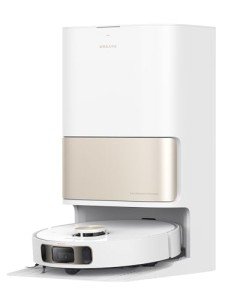A Brief History Of Floor Robot History Of Floor Robot
Understanding Floor Robots: The Future of Home Cleaning
In current years, technological advancements have considerably transformed the landscape of home cleaning. Amongst the most notable developments is the floor robot, a gadget that has rapidly acquired appeal for its convenience and effectiveness. This post aims to explore the various aspects of floor robots, their functionality, benefits, popular models, and some frequently asked questions to assist consumers make informed decisions.
What is a Floor Robot?
A floor robot, frequently described as a robotic vacuum, is an automated gadget created to browse floors and remove dirt, dust, and debris. Unlike conventional vacuum, floor robots operate autonomously, offering a hassle-free cleaning experience. These smart machines make use of sensing units, mapping technologies, and advanced algorithms to tidy different surface areas, including wood, tile, and carpet.
How Do Floor Robots Work?
Floor robots operate through a mix of hardware and software components. Here are the crucial functions that allow their performance:
1. Sensing units
- Obstacle Detection: Floor robots have built-in sensors that help them discover barriers, permitting them to navigate around furniture and avoid falls.
- Cliff Sensors: These prevent the robot from dropping stairs or ledges by recognizing changes in elevation.
2. Navigation and Mapping
- Visual Mapping: Some sophisticated designs employ video cameras and laser innovation to produce detailed maps of the cleaning location.
- Synchronised Localization and Mapping (SLAM): This strategy assists the robot track its place and effectively plan its cleaning path.
3. Cleaning Mechanisms
- Suction Power: Most robotic vacuums use a suction system to capture dirt and dust, which is then stored in an onboard dustbin.
- Brushing Systems: Many designs come equipped with turning brushes or mops for boosted cleaning capabilities, particularly on carpets or hard surfaces.
4. Smart Features
- Connection: Many floor robots support Wi-Fi connection, permitting users to manage them via smartphone apps or smart home systems.
- Scheduling: Users can set up cleaning times, ensuring their homes are clean even when they're not there.
5. Self-governing Charging
- Self-Docking: Most robots automatically return to their charging station once their battery runs low, ensuring they're always all set to clean.
Advantages of Using a Floor Robot
The adoption of floor robots comes with numerous benefits that make them attracting users:
1. Convenience
Floor robots can clean up while users address other jobs, enabling multitasking and time-saving.
2. Increased Efficiency
Robotic vacuums typically cover more ground in less time compared to conventional approaches, thanks to their organized cleaning patterns.
3. Constant Cleaning Routine
Users can set up routine cleanings, guaranteeing that their homes remain tidy without requiring daily intervention.
4. Availability
Robotic vacuums can quickly access hard-to-reach locations, such as under furnishings or in tight areas.
5. Advanced Features
Numerous models come equipped with functions like voice control and app combination, boosting functionality and accessibility.
Popular Floor Robots
When thinking about a floor robot, numerous brand names and designs accommodate various needs and budget plans. Here's a quick summary of some leading options:
Brand
Model
Key Features
Price Range
iRobot
Roomba i7+
Smart mapping, self-emptying dock
₤ 600 – ₤ 800
Roborock
Roborock S7
Sonic mopping, obstacle avoidance
₤ 500 – ₤ 700
Neato
Neato D7
D-shape design, advanced suction
₤ 600 – ₤ 800
Ecovacs
Ecovacs Deebot T8
Mopping function, advanced mapping
₤ 600 – ₤ 800
Shark
Shark IQ Robot
Self-emptying base, home mapping
₤ 400 – ₤ 600
(Note: Prices may vary based on merchants and continuous promotions.)
Often Asked Questions (FAQs)
1. Are floor robots effective on carpets?
Yes, the majority of modern floor robots are developed to tidy various surfaces, including carpets. Models with strong suction and rotating brushes are especially efficient at selecting up family pet hair and ground-in dirt.
2. How frequently should I run my floor robot?
This depends upon your household's needs. For homes with animals or high foot traffic, everyday or every other day cleaning might be helpful. For quieter homes, running the robot when a week might suffice.
3. Can I control my floor robot remotely?
Many floor robots include mobile phone apps that allow users to manage their devices from another location, schedule cleanings, and monitor efficiency.
4. Do I need to clear the dustbin regularly?
Most robots need routine emptying of the dustbin, particularly in homes with animals or heavy soil. However, some models offer self-emptying abilities, which minimize user involvement.
5. Are floor robots appropriate for all kinds of flooring?
The majority of floor robots are effective on various surface areas, including hardwood, tile, and low-pile carpets. Nevertheless, some might perform better on particular surface areas, so it's necessary to pick a model matched to your home's needs.
As families continue to welcome innovation, floor robots have actually become necessary cleaning buddies, providing benefit, efficiency, and advanced features. Comprehending their performances, advantages, and readily available designs permits customers to select the ideal floor robot to meet their specific cleaning requirements. By buying robotic vacuum cleaner sale , house owners can guarantee their living spaces remain clean and comfortable with minimal effort.
